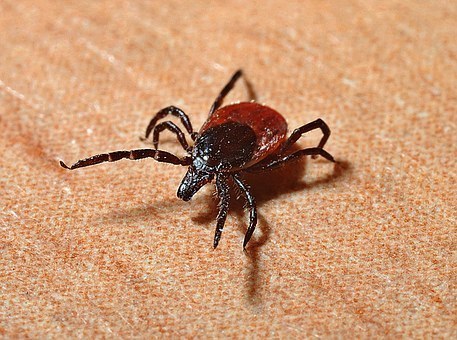
Summer fun brings beautiful idyllic days outdoors exploring nature. In the midst of this delight, there are some things to be cautious of – and one of those is ticks. As a parent, few things are creepier than finding a tick burrowed into your child’s skin. Ticks can transmit some scary and life-altering diseases. Lyme disease, transmitted by tiny deer ticks, is the most common vector-borne illness in the United States according to the CDC, and there are many other illnesses transmitted by various kinds of ticks. Many of these ticks are miniscule and their bites are painless, which means they often go unnoticed. The best defense against these diseases is to avoid ticks altogether, but you should know what to look for to identify a tick bite and what to do should you find a tick on your child.
Protect your child from ticks
Ticks hang out in grasses, bushes, decomposing leaves or trees and on tree trunks. As you brush by, a tick or many ticks can attach to your clothing or hair. They crawl around until they find exposed skin and then will burrow in. Avoiding these areas is the surest way to avoid ticks, but that’s not realistic for children nor do you want to deprive them of the benefits of playing in nature. Ticks can easily be picked up even in your own backyard. Here are some tips to protect your child from ticks.
1. Wear long clothing and hats to cover exposed skin.
2. Wear insect repellent containing 20% picaridin, like PROVEN repellent, which effectively repels ticks for 12 -14 hours, compared to DEET products which are only effective for 1 hour against ticks.
3. Check clothing for ticks and tumble dry on high heat for 10 minutes to kill ticks.
4. Shower within two hours of coming inside to wash off any unattached ticks.
5. Check your child’s body for ticks. Ticks particularly like to hide under the arms, in or around ears, in and around hair, in the belly button and around the waist, behind knees and between legs. Some species of ticks are very tiny so even a speck of dirt or freckle should be inspected closely.
What to do if you find a tick
Finding a tick burrowed into your child’s skin can be very alarming to any parent, but removing the tick as soon as possible is key to preventing any infection.
1. Use fine-tipped tweezers to grasp the tick as close to the skin as possible
2. Pull upward with steady pressure. Do not turn or twist the tick which could cause the head to breakoff and remain in the skin.
3. After removing the tick, thoroughly clean the bite area and hands with soap and water or rubbing alcohol.
4. Dispose of a live tick by putting it in alcohol, a sealed bag or container or flushing it down the toilet.
5. Using a hot match to get a tick to crawl out of the skin, nail polish or petroleum jelly to suffocate the tick are not recommend methods of treating a tick bite according to the CDC.
Symptoms of tick-related illnesses
1. If your child develops a rash, fever, fatigue, body aches or headache within weeks of removing a tick, follow up with a doctor and report the tick finding.
2. The signature rash of a Lyme tick bite looks like a solid red oval or a bull’s eye.
Leave a Reply